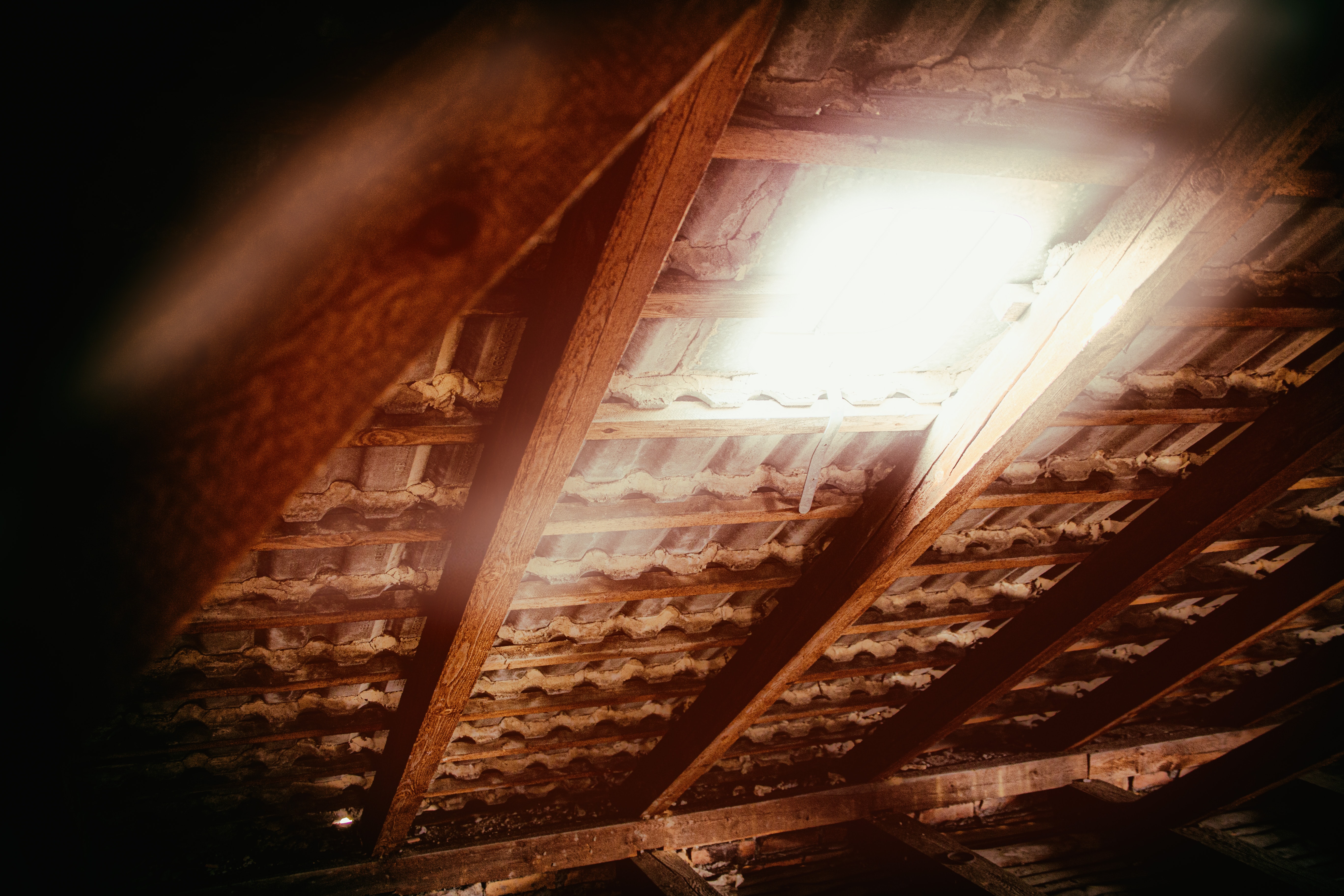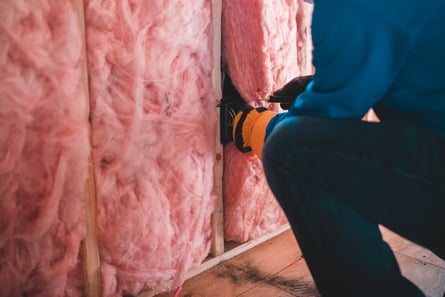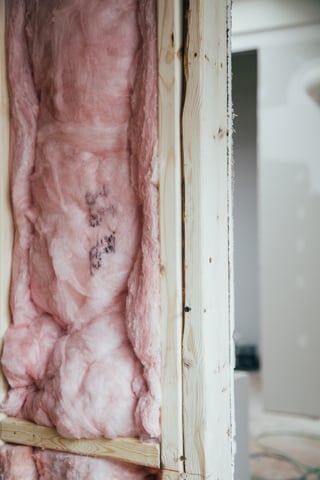What Does Insulation R-Value Mean?
February , 2025 | 6 min. read

In my childhood home, we had an unfinished attic which meant that the insulation was exposed. At the ripe age of 6, all this meant to me was that I had my very own cotton candy wonderland just a hop, skip, and jump away from my room. Neat, right? To make a long story short, it took a few playdates in the attic and one memorable trip to the emergency room to realize my home in fact did not have a cotton candy wonderland, but instead a fiberglass factory. Sorry, Mom.
Now, at 25, I’ve quit the stuff cold turkey, and I’ve even learned a bit about the different types of materials used for insulation in attics, their R-values, and how they’re calculated thanks to my team here at RoofCrafters. My crew has been repairing and replacing roofs for nearly 30 years now, and we know just how important proper insulation is to the overall longevity of your roof, and even your entire home.
So, if you're curious about the cotton candy wonderland in your home, and you’ve got some questions about R-value, it’s a good thing you're here. In this article, I’ll be defining R-value in terms of insulation, how the experts calculate it, which R-value insulator your attic requires, and the most commonly used insulating materials. Let’s get started!
What Does R-Value Mean?
R-value isn’t as complicated as it may seem. R-value is known as thermal resistance, which must mean that the “R” stands for, well, resistance. Essentially, it boils down to a material's resistance to heat flow. So, in this case, we’re measuring the insulation’s resistance to the flow of heat. This numerical expression is an indicator of how good of an insulator a certain material is; the higher the R-value, the better the insulator.
R-value can be determined in a range. So, say you have material with an R-40 value in your attic, while your neighbor has a material with a value of R-10. This means your material is 4 times the better insulator than your neighbors. Proper insulation is important throughout your entire home, however, it’s especially important for your attic. In this case, it’s safe to say that your electric bills are far less expensive than your neighbors. If they need to schedule an inspection, we know a guy!
How Is R-Value Calculated for Insulation Requirements?
Now that we’ve covered the definition of R-value, how is it calculated? Bare with me here, because to understand the calculation of R-value, we need to cover k-value while we’re at it. As you know, R-value equates to thermal resistance; How good of an insulator a certain material is. The heat flow in question though is measured by something different called k-value.

According to Designing Buildings, “A k-value (sometimes referred to as a k-factor or lambda value λ) is a measure of the thermal conductivity of a material, that is, how easily heat passes across it. It is a fundamental property, independent of the quantity of material. It represents the steady-state heat flow through a unit area of a material resulting from a temperature gradient perpendicular to that unit area. It is expressed in W/mK”.
In terms of insulation, k-value is the measurement of heat that flows through 1 square foot of material with 1-inch thickness in 1 hour, accounting for each degree of temperature change between the inside and outside of your attic. Consider this equation:
R-value = 1 / k-value
R-value is essentially the opposite of k-value. The portion that gets measured is the k-value, while the R-value is then calculated from the k-value. Whew, are you still with me?
What R-Value Insulation Do I Need?
Depending on the region of the U.S. you live in, there are different recommendations for specific rooms or spaces that need to be properly insulated. Let’s take an attic, for example. These recommendations from Energy Star can give you a better idea of which R-value you need.
Once you locate the zone you live in per the Insulation Energy Star Climate Zone chart, pay attention to the recommended minimum R-value. If you’re a Northern Floridian like me, according to the chart, we should have R-values between 30-60 for our attics.

Per any attic, no matter which zone you’re in, Energy Star recommends nothing below an R-value of 30. Here’s a quick peek at the zone requirements for attics:
- Zone 1: R-30 - 49
- Zone 2: R-30 - 60
- Zone 3: R-30 - 60
- Zone 4: R-38 - 60
- Zones 5-8: R-49 - 60
What Types of Attic Insulation Are Available?
There are a few different types of insulation that you can choose from for your attic, and the 5 most common materials include:

- Cotton (no, not candy)
- Foam
- Cellulose
- Fiberglass
- Mineral wool
Since you’re halfway to becoming an R-value expert, you know by now that the higher the R-value, the better insulator it will be for your home. However, each home is different, so the material with the highest R-value may not be the material that's best for you, capiche? Different insulation materials have different strengths and weaknesses, so just because your neighbor has mineral wool insulation doesn’t necessarily mean that that insulator will work best for your home and your needs.
Need Help Deciding?
Still unsure about which insulation material is right for your attic? Reach out to your local roofing contractor. They’ll inspect your attic, evaluate your current insulation, and recommend the best option to keep your home energy-efficient and your bills low.
If you’re struggling to find the right contractor, download our guide, “The Top 10 Most Critical Questions You Want to Ask Your Potential Roofing Contractor.” It’s packed with useful prompts to ensure you hold contractors accountable for their work and services.

In the meantime, check out our article, “The Anatomy of a Roof,” to better understand how all the parts of your roof work together. And remember: proper insulation isn’t just about keeping your home cozy - it’s about protecting your roof and saving you money in the long run.
My name is Cassie, and I’m the Content Manager here at RoofCrafters. I was born and raised in Chicago, Illinois, and made my way out to Florida post-college graduation. I’m incredibly passionate about writing and creating valuable content that helps others with the collaboration of my marketing team. When I’m not working, I enjoy shopping (a little too much), spending time at the beach, and reading!


